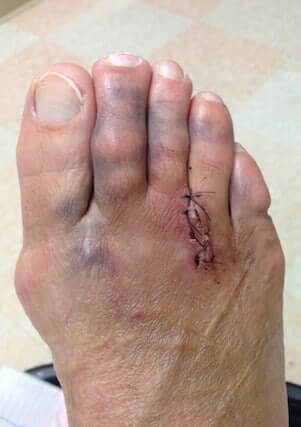Surgical removal of Morton’s neuroma is the most common treatment for the pain, discomfort and immobility in stubborn cases of Morton’s neuroma. However, the success rate and patient satisfaction scores are fairly low after most surgeries. Patients usually report varying degrees of numbness, loss of sensations and pin-and-needle sensation due to incomplete removal of neuroma and painful neuroma stump formation.
Some reports suggest as many as 30% of patients under-going Morton’s neuroma surgery surgery are dissatisfied with the outcome. The reasons for failed surgery can be broadly divided into three groups: a) wrong diagnosis b) wrong surgery and c) right diagnosis and right operation but unfavourable outcome.(1)
Discomfort, pain and difficulty walking are the most common problems after surgery and these are usually due to complications such as infection, stump neuroma formation or the onset of Chronic Regional Pain Syndrome.
Before considering Morton’s neuroma surgery, you should consider a non-surgical procedure to treat your Morton’s neuroma.
For more information on pain and complications after Morton’s neuroma surgery, click here.
For a discussion on whether Morton’s neuroma is right for you, click here.

(1) Failed morton’s Neuroma Surgery, M. S. Davies, J Bone Joint Surg Br 2012 vol. 94-B no. SUPP XXII 3


By providing us with your information you are consenting to the collection and use of your information in accordance with our Terms of Service and Privacy Policy.